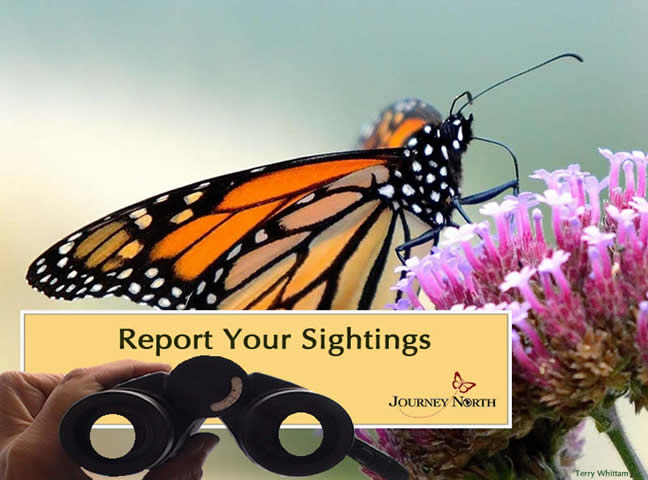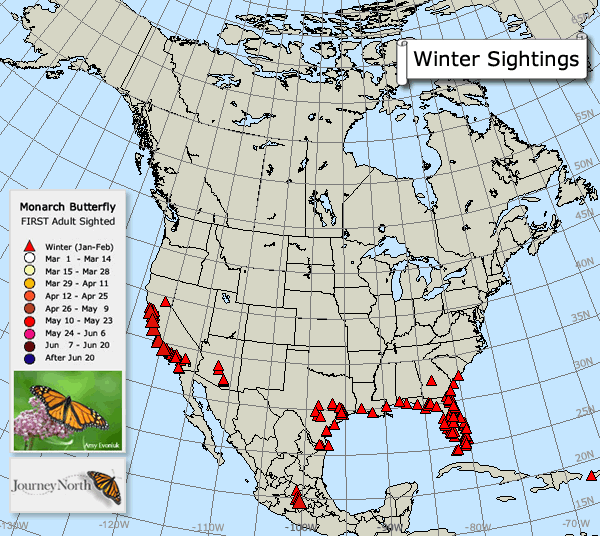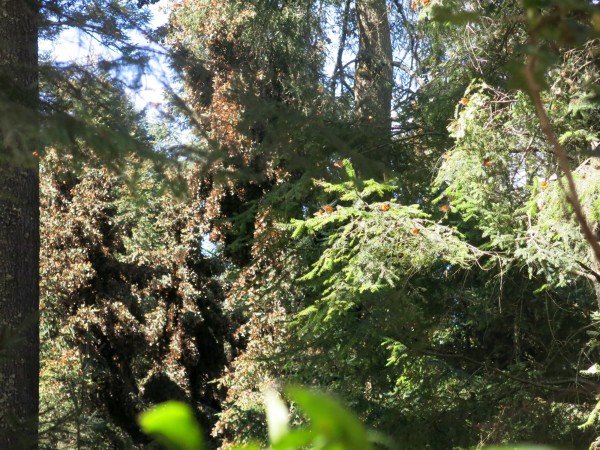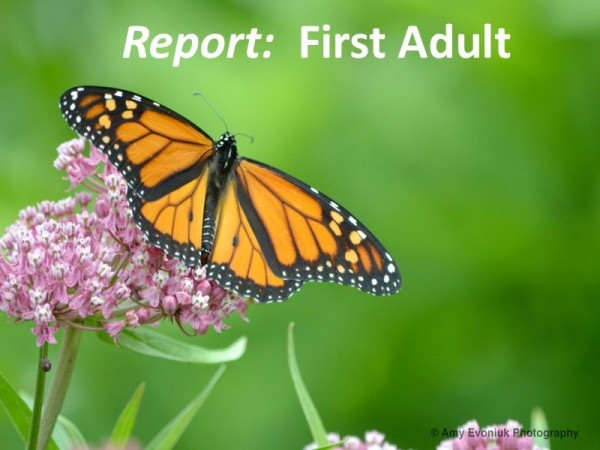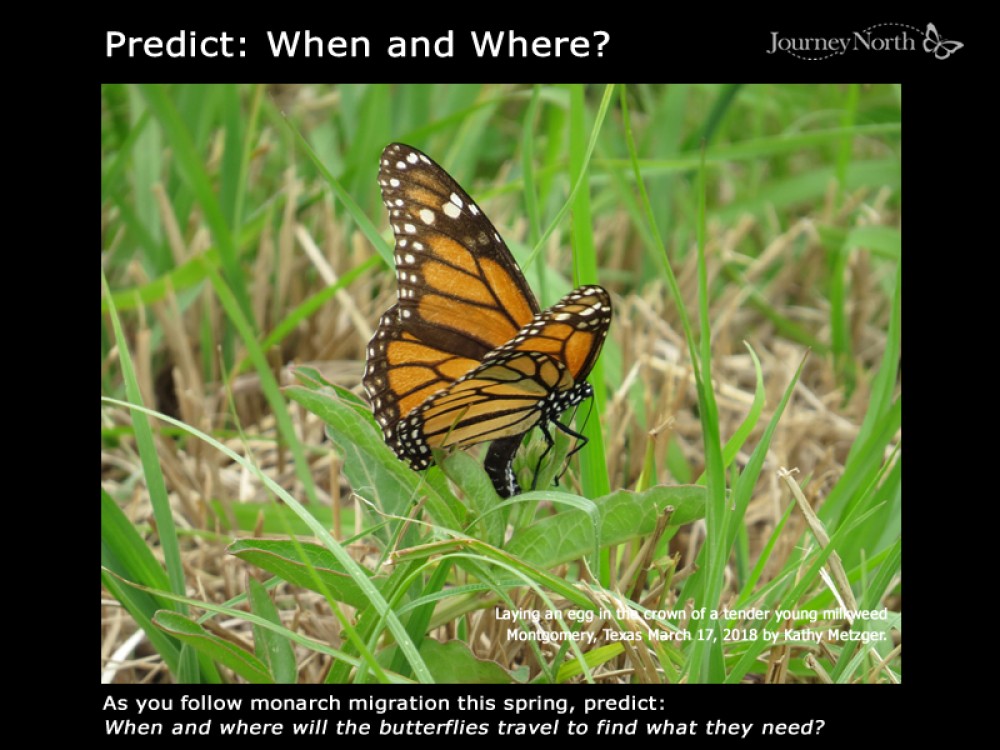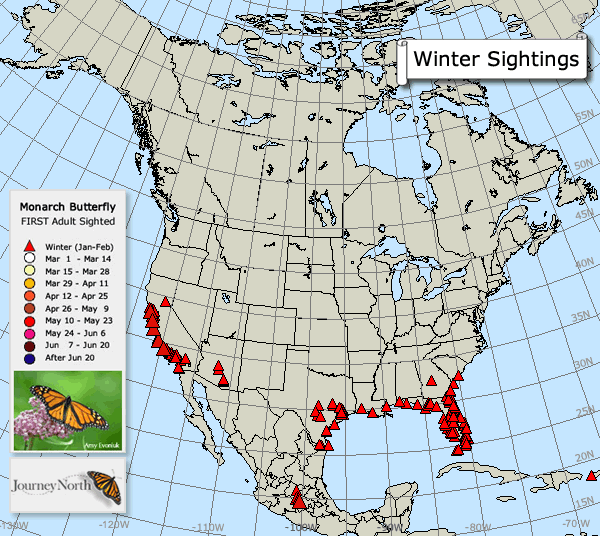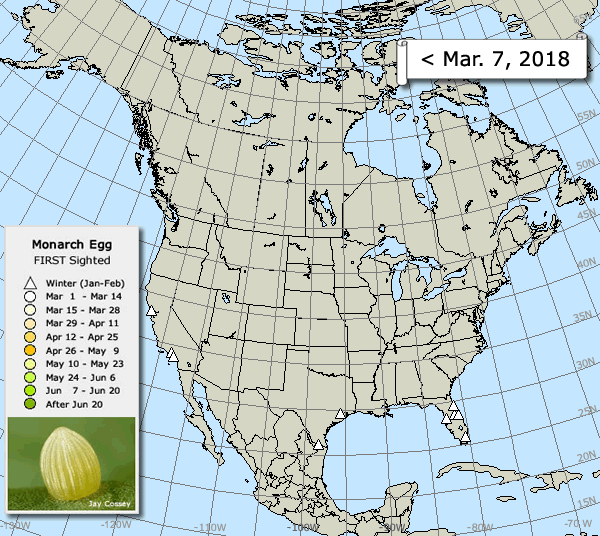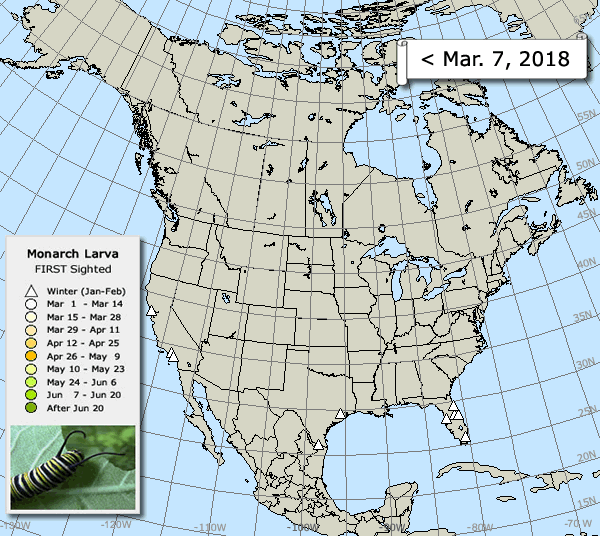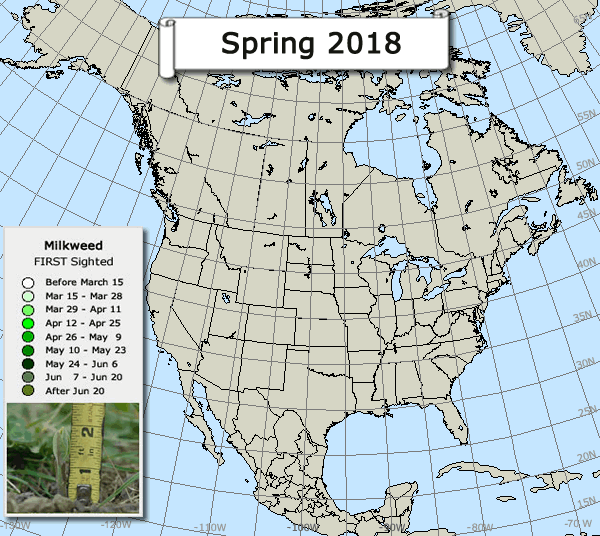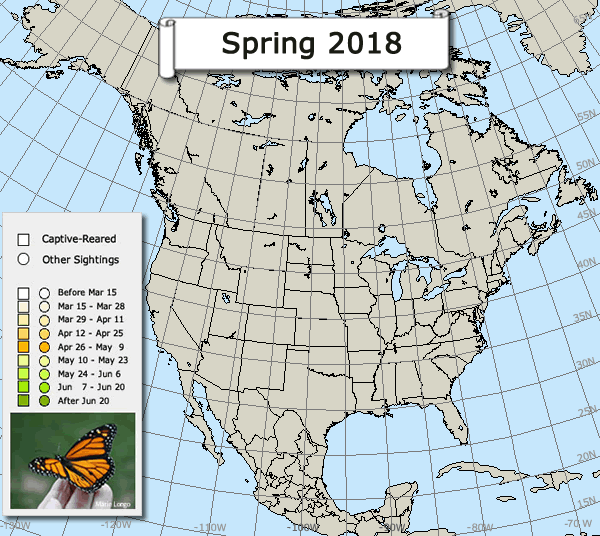Wave of Arrival in Texas
Observers reported monarchs by the hundreds along the Texas Gulf Coast. This is the largest coastal migration we’ve ever seen.
Wave of Arrival in Texas
The migration made a dramatic entry into Texas over the past 10 days and a first sighting from Arkansas confirms monarchs are already crossing into that state.
Unusually strong migration was reported along the Texas Gulf Coast, where people witnessed 75, 100, and 200 monarchs in a single day. Numbers this high are typical during fall migration but exceedingly rare in the spring. In fact, this is the largest coastal spring migration we've documented in 25 years.
March 13, 2018 South Padre Island, Texas: "A cold front at the beginning of last week seemed to have stalled migration and dropped lots of monarchs all over South Padre Island. They stuck around for a couple of days. Once the winds shifted, coming from the south again, most of them left. This is the largest spring migration I've seen here," noted Javi Gonzalez, Naturalist at South Padre Island Birding & Nature Center. More...
March 14, 2018 Corpus Christi, Texas: "There appeared to be a huge influx of monarchs today. I saw 20 total over 4 miles. A friend had close to 100 on Matagorda Island ~35 miles north of me on the same day," reported Gretchen Nareff of U.S. Fish and Wildlife Service. More...
Monarchs Leave, Habitat Needs Remain
The monarchs of Cerro Pelón have finally definitively departed, reports Ellen Sharp. "There were some still clinging to trees on the afternoon of March 18. By the next morning, the trees emptied out and the air filled with butterflies. By midday of the 19th, they were all gone."
Ellen watched as dozens of monarchs flew overhead on the first miles of their journey north. "We have to make sure the monarchs’ forest stays intact in their absence now that the butterfly season is over," she notes.
Gone from Cerro Pelon by Ellen Sharp
Gone too are monarchs from Sierra Chincua, though large clusters remained in El Rosario as of March 19th. "Throughout the week, streams of butterflies have been coming down the mountain and passing along Angangueo in a clear northern direction. The waves come intermittently, from around 9-10 in the morning to the early afternoon every day. Indeed as they pass they are announcing the closing of the season," reports Estela.
The Season Ends by Estela Romero
When and Where Will Monarchs Travel?
It's a critical time as the monarchs race northward to produce the next generation. Their lives are coming to an end. As you track migration this spring, try to predict the path and pace of migration.
- When and where will monarchs travel to get what they need?
Tracking Spring Migration
Spring Migration 2018
Report all monarchs you see — adults, eggs, larvae.


